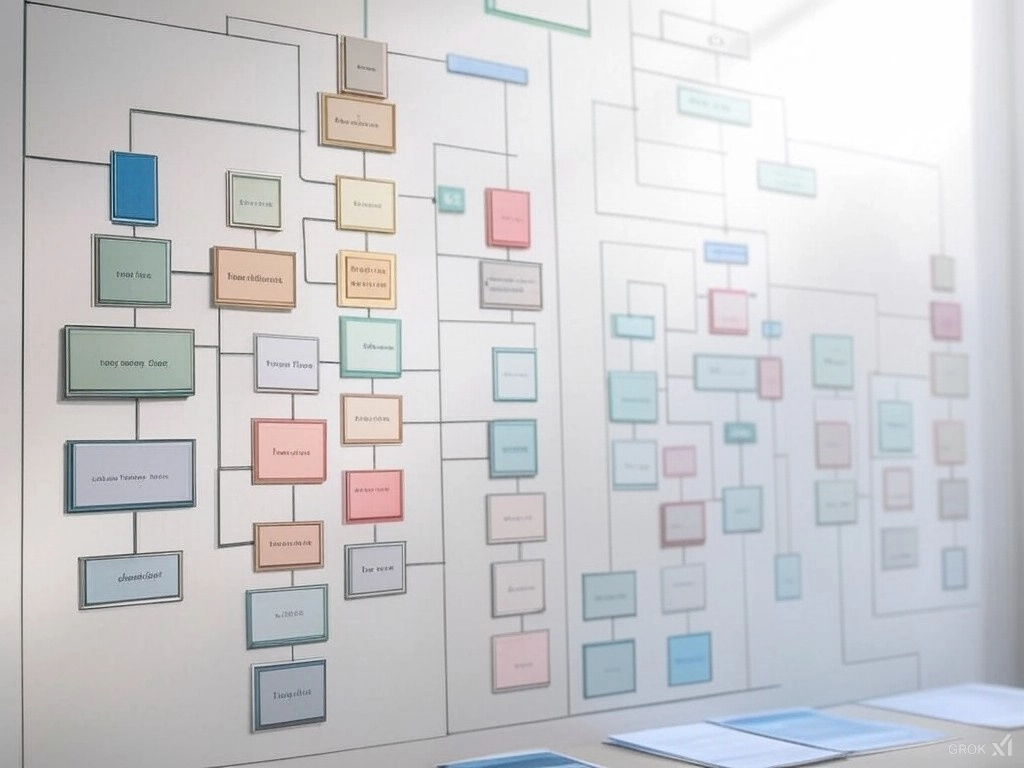Artificial intelligence (AI) is reshaping how we manage projects. But for many New Zealand project managers, the question isn’t whether to adopt AI. It’s how to do it practically, without disrupting workflows or losing the human element that makes projects succeed.
The good news? You don’t need to overhaul everything overnight. Smart AI integration starts small, focuses on real problems, and builds from there.
Understanding AI’s Role in Modern Project Management
AI isn’t here to replace project managers. It’s here to handle the repetitive, time-consuming tasks that pull you away from what matters: leading your team, managing stakeholders, and making strategic decisions.
Think of AI as your analytical assistant. It can process vast amounts of data in seconds. It spots patterns you might miss. It flags risks before they become problems. But it can’t read the room in a stakeholder meeting. It can’t motivate a struggling team member. It can’t navigate the complex human dynamics that define project success.
That’s where you come in.
Practical Strategies for AI Integration
Start with Predictive Analytics
One of AI’s most valuable applications is predictive analytics. Modern AI tools can analyze your historical project data to forecast timelines, identify potential bottlenecks, and predict resource needs.
Start by feeding your AI tool data from past projects. Include timelines, budgets, resource allocation, and outcomes. The more data you provide, the better its predictions become.
Use these insights to inform your planning, not dictate it. AI might flag that similar projects typically run 15% over budget in the testing phase. That’s valuable intelligence. But you still need to assess whether that pattern applies to your current project, given its unique context and constraints.
Implement Real-Time Project Tracking
AI-powered dashboards can monitor project health in real time. They track progress against milestones, flag deviations from plan, and alert you to emerging issues.
This doesn’t mean micromanaging your team. It means having visibility without constant check-ins. You can see at a glance which tasks are on track, which are falling behind, and where you need to focus your attention.
The key is setting up your tracking parameters correctly from the start. Define what “on track” means for your project. Establish clear metrics. Configure your alerts to flag genuine issues, not every minor variance.
Optimize Resource Allocation
Resource management is one of the trickiest aspects of project management. AI can help by analyzing team capacity, skill sets, and availability to suggest optimal resource allocation.
Some AI tools can even predict when team members might become overloaded based on their current workload and upcoming commitments. This gives you time to rebalance work before burnout becomes an issue.
But remember, AI doesn’t understand the nuances of team dynamics. It might suggest assigning a task to the person with the most relevant experience, but it won’t know that person is mentoring a junior colleague who would benefit from the challenge. Use AI’s suggestions as a starting point, then apply your judgment.
Enhance Risk Management
AI excels at identifying patterns and anomalies. This makes it particularly useful for risk management.
Configure your AI tools to monitor project indicators and flag potential risks. Maybe it notices that whenever a particular type of task runs late, it creates a cascade effect on dependent tasks. Or it identifies that projects with certain characteristics tend to face specific challenges.
These insights help you move from reactive to proactive risk management. Instead of dealing with problems as they arise, you can anticipate and mitigate them.
Create a risk response plan for the patterns AI identifies. When the tool flags a potential issue, you’ll already know how to address it.
Automate Administrative Tasks
Project managers spend too much time on administrative work. Status reports, meeting notes, schedule updates, documentation. These tasks are necessary but time-consuming.
AI can automate many of them. Tools can generate status reports from your project data. They can transcribe and summarize meetings. They can update schedules based on completed tasks and new information.
This frees you up for higher-value work. Strategic planning. Stakeholder engagement. Team development. The things that actually move projects forward.
Start by automating one or two administrative tasks. See how it works. Refine the process. Then expand to other areas.
Addressing the Challenges
AI integration isn’t without challenges. Let’s address the main ones.
Data quality matters. AI is only as good as the data you feed it. If your project data is incomplete, inconsistent, or inaccurate, AI’s insights will be flawed. Invest time in cleaning up your data before implementing AI tools.
Change takes time. Your team might be skeptical about AI. Some might worry it’s replacing them. Others might resist changing established workflows. Address these concerns directly. Explain how AI supports their work, not replaces it. Involve them in the implementation process. Show them the benefits firsthand.
Integration can be complex. Getting AI tools to work with your existing systems isn’t always straightforward. You might need technical support. Budget time and resources for proper integration and testing.
Privacy and security are critical. AI tools often require access to sensitive project data. Ensure any tools you use comply with New Zealand privacy laws and your organization’s security requirements. Understand where your data is stored and who has access to it.
The New Zealand Context
New Zealand’s project management landscape has unique characteristics that affect AI adoption.
Many organizations here are small to medium-sized. You might not have dedicated IT teams or large budgets for new technology. That’s okay. Many AI tools are now available as affordable, cloud-based solutions that don’t require extensive technical expertise.
New Zealand’s collaborative business culture is actually an advantage when implementing AI. The technology works best when teams share data openly and work together to refine processes. That aligns well with how we typically operate.
Our geographic isolation used to be a barrier to accessing cutting-edge technology. Not anymore. Cloud-based AI tools give New Zealand project managers access to the same capabilities as their counterparts anywhere in the world.
Moving Forward
AI in project management isn’t about chasing the latest trend. It’s about finding practical ways to work smarter, deliver better outcomes, and create more value for your stakeholders.
Start small. Choose one area where AI could make a real difference. Implement it properly. Learn from the experience. Then expand.
Keep the human element central. AI handles data and patterns. You handle people and judgment. Together, that’s a powerful combination.
The project managers who thrive in the AI era won’t be the ones who resist technology or blindly adopt every new tool. They’ll be the ones who thoughtfully integrate AI where it adds value while maintaining the human skills that define great project management.
That’s the practical path forward for New Zealand PMs.


